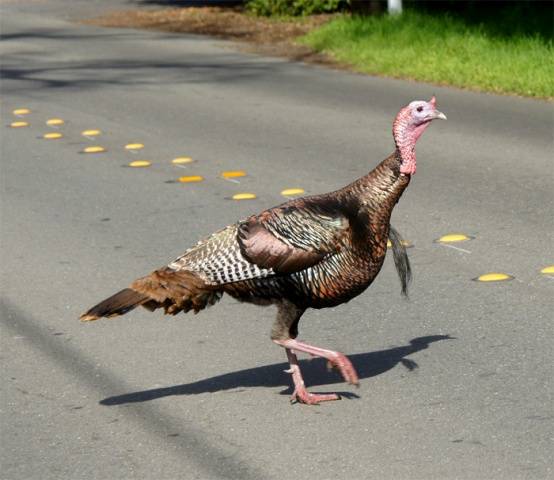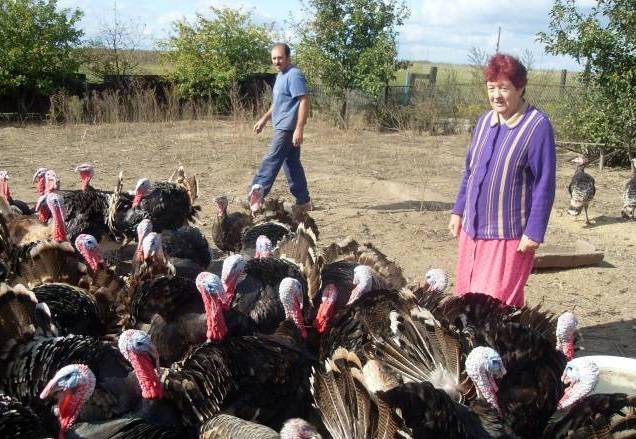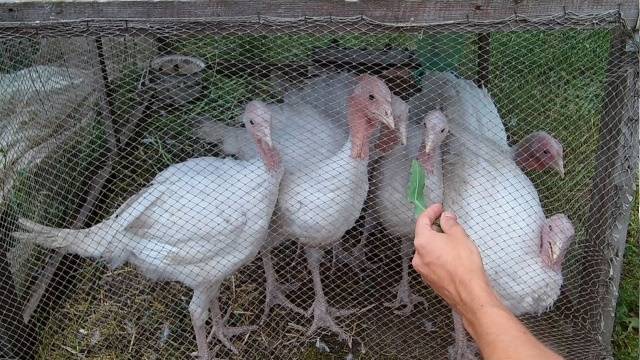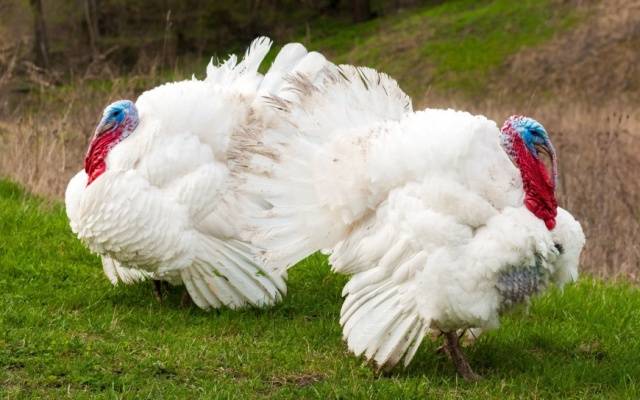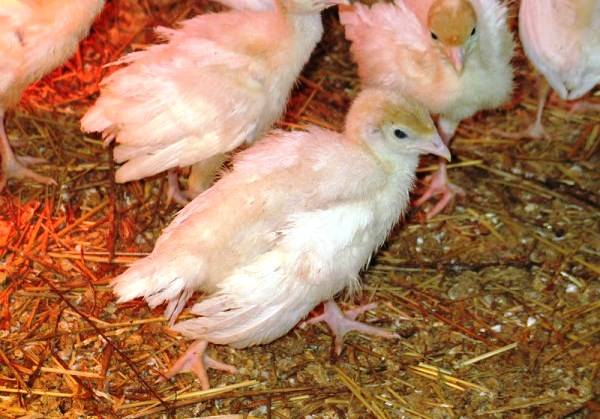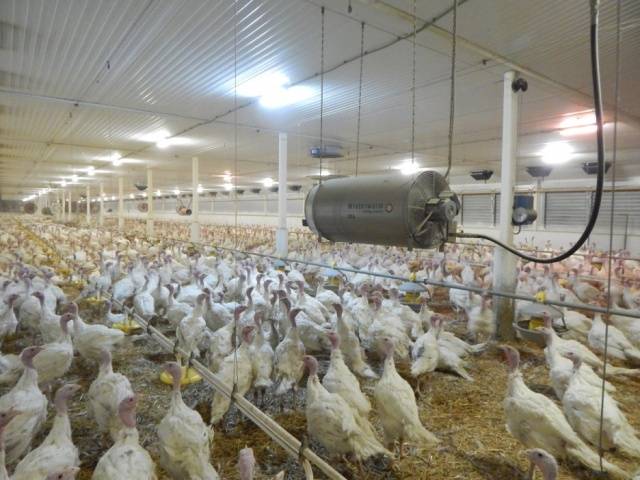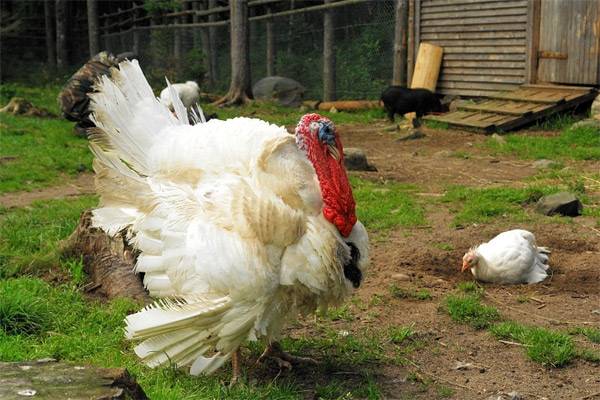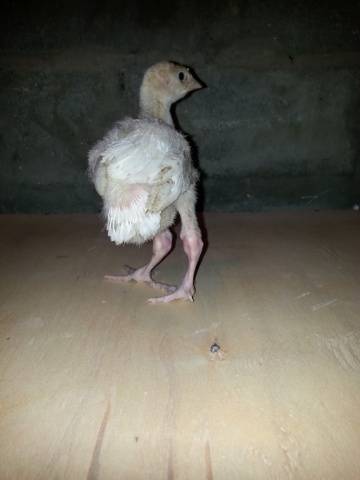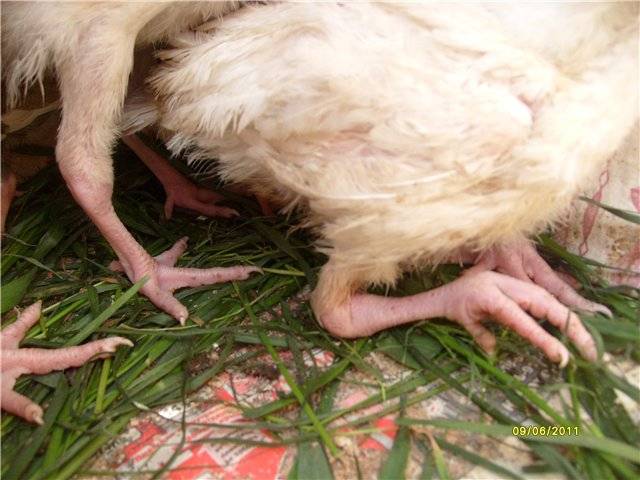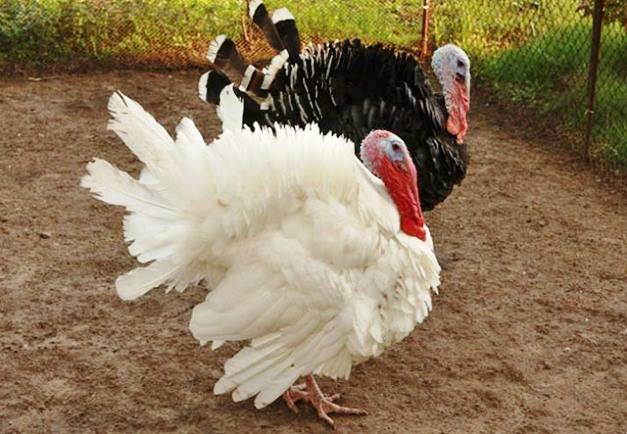Content
Despite the severity of infectious diseases, the main problem for turkey owners is not disease, but a phenomenon known as "falling to your feet." You can protect yourself from infections if you take a responsible approach to the issue of buying turkey poults and eggs, as well as follow the rules of hygiene.
"Falling to your feet" actually looks like the turkey's inability to move freely on straight legs. Especially susceptible to this are broiler turkey poults, which they try to grow in about the same way as broiler chickens, that is, in a confined space with abundant feeding for the fastest gain in weight.
But turkeys are not chickens. By nature, turkeys were destined to travel long distances in search of food, being not the heaviest birds on the planet. The development of heavyweight broiler turkey breeds has led to problems with the growth of long leg bones in turkeys. And the correct development of tubular bones in a turkey is impossible without constant movement.
The need to walk turkeys
Actually, the main reason why turkeys fall to their feet is precisely the lack of walking for turkeys. After planting more than a dozen birds of a very large breed, private traders usually do not think that turkeys will need to walk with an area of 200 m2 or more. On a standard plot of 6 - 10 acres, where a vegetable garden, utility rooms and a residential building are usually located.
And many take and under a hundred heads of turkey poults, of which up to 6 months live well if a dozen.
Why a cramped turkey pen is bad
In the absence of a spacious walk, turkeys have to spend most of their time sitting. For growing turkeys, such a pastime is fatal.
At this time, turkey poults not only grow tubular bones, but tendons also develop. If the turkey sits down and sits, not running anywhere, the flexor tendons are turned off from work and stop developing, and, therefore, increase in length. As a result, contracture develops, that is, shortening of the tendon. With a short tendon, the joint cannot work and fully extend. The turkey has a curvature of the legs, and the owners have a question "how to treat".
Contracts are almost never treated. It is possible to correct the matter only in the initial stages by long walking the turkey poults, which no one will provide for the meat poultry.
In the absence of full-fledged walking, contractures continue to develop, and the turkey begins to move with difficulty. Falls are very frequent. It becomes harder for the turkey to get up after the next fall every day, and the turkey can fall from the slightest unevenness on the ground or, in general, on level ground.
Often these poults fall, trying to get to the feed. Since it is difficult for them to get up, the turkey begins to malnourish. The result is exhaustion and death from hunger. The best option would be to kill such a turkey.
Walk as prevention. Treatment of leg diseases in turkey poults
The second mistake of Russian summer residents is the desire to grow a hefty turkey weighing 25 kg, as they say on the sites. First, the sites are reprinted from English-language sources, where the weight of half-year-old turkeys is indicated in pounds. That is, in fact, even a broiler turkey raised by professionals on industrial farms weighs 10 - 12 kg at most in six months. Which is also a lot. Such Christmas turkeys are not in demand in the West. Consumers prefer carcasses weighing 3 - 5 kg. The producer slaughters broiler turkeys at 2 - 3 months, when there are no leg problems or they are just beginning. Thanks to early slaughter, large producers have the opportunity to keep their turkeys crowded.
Secondly, in order to avoid the problems of the spread of infections and stress in crowded content, the manufacturer widely uses medications that private traders try not to use.
The results are not encouraging. Usually it is difficult for private traders raise broiler turkeys for meat. Smaller egg breeds of turkeys are better suited for keeping in a private backyard.
Sunbathing for turkey poults
Another strong argument in favor of long-term walking of turkey poults is the need to obtain ultraviolet radiation.
All reference books indicate that the temperature in the brooder should be at least 30 ° C for freshly hatched turkeys, gradually dropping to 20 - 25 degrees. This is usually done using infrared lamps and forgetting that these lamps only heat the surface, not the air. Only later can the air in the brooder be warmed up from the heated surface.
But without ventilation, the poults will suffocate, and ventilation is new cold air. Hence the opinion about colds from drafts.
At the same time, taking care of the heat, no one thinks about ultraviolet radiation, keeping turkey poults only under an infrared lamp for up to a month or more. Just at the time when turkey poults need ultraviolet radiation to produce vitamin D, without which calcium cannot be absorbed.
This is another secret that a large turkey meat producer is in no hurry to share with private owners. The photo clearly shows that in addition to ordinary fluorescent lamps, infrared and ultraviolet emitters are also built into the ceiling.
The legs of the turkey chick begin to bend even in the brooder, but due to their small live weight, they temporarily support the weight of the bird. When the turkey gains more muscle mass, it will sit on its legs that are no longer able to support its owner.
They do it instinctively. Moreover, such sunbathing is taken not only by birds, but also by mammals. Having typed the required dose of ultraviolet radiation, the animals begin to hide in the shade.
If everything is usually clear with mammals, then the bird is quite capable of scaring the owner. Birds usually bask in the sun (at a temperature of 50 ° C on the ground) in the classic pose of a sick individual: they lie crumpled and buried their beaks in the ground. But unlike sick birds, when trying to approach them, they briskly jump up and, muttering curses, run away from a person to the opposite corner.
Thus, even with a balanced feed, two factors: lack of walking and ultraviolet radiation can already lead to abnormal limb development in turkey poults.
The third factor that can affect turkey legs regardless of infectious diseases: feed.
The influence of feed and the relationship of trace elements and vitamins
A responsible manufacturer develops a compound feed formula individually for each direction and age of poultry. There are manufacturers who do not rack their brains over poultry feed formulas.Private traders who prefer to feed turkeys with their own feed, also without laboratory analysis, cannot take into account whether all the necessary elements are present in the feed for their birds.
In a living organism, all factors are interconnected. In an effort to reduce the cost of keeping turkeys, owners often feed the birds a large amount of bran. Calcium, which turkey poults need, is absorbed only with a certain proportion of calcium to phosphorus. When the amount of phosphorus is exceeded, calcium begins to be washed out of the bones of the turkey poults. This is exactly what happens when there is an overabundance of bran in the feed.
Calcium cannot be absorbed without manganese. With an insufficient content of manganese in the feed, it is useless to give feed chalk to turkeys.
Trying to prevent rickets and not being able to provide the turkeys with adequate walking, the owners add vitamin D₃ to the turkey's diet. Typically in the form of fish oil. But excess D₃ does not prevent rickets, but promotes the deposition of calcium on the walls of blood vessels.
An excess of fat in the diet, especially of animal origin, leads to an acute inflammation of the joints: arthritis. Unable to stand due to pain, the turkeys sit down.
The lack of essential amino acids disrupts the metabolic processes in the body of turkeys and also interferes with the normal assimilation of nutrients, minerals and trace elements.
Problems with the legs of turkey poults, depending on feed, do not appear immediately, since the feed still contains a certain amount of necessary elements. If rickets "creeps out" in 1-2 months, then the "feeding" problems will appear only in 3-4 months.
Curvature of the legs of turkey poults at 4 months
All these nuances are included in professional bird feed produced by a responsible manufacturer.
Mechanical causes of falling on paws
The turkey may prefer to sit in place if the turkey's paw pads are damaged by mechanical objects or due to wet bedding. The liquid mixed with caustic excrement quickly corrodes the skin on the turkey paw pads. It hurts to walk on bare meat, so the turkey limits itself in mobility.
Preventive measures in this case are simple: observance of the rules of veterinary hygiene and timely change of the litter. Of course, you should check to see if rainwater is heating your turkey barn.
Although the above reasons are often the main ones in turkeys, they turkey diseases, in which the bird falls to its feet, are not limited. The turkey sits on its paws and for some infectious diseases that cause inflammation of the limbs.
Infectious diseases of turkeys, their signs and treatment
The main diseases in which turkeys cannot stand on their paws are 4: postnatal pullorosis in broilers, Newcastle disease, infectious chicken bursitis, Marek's disease.
Postnatal pullorosis
Leg problems are observed only in broiler turkey breeds in the case of chronic and subacute disease. Poultry of meat crosses, pullorosis causes inflammation of the joints. Because of the pain, the poults cannot stand and sit down.
There is no treatment for pullorosis, therefore, if symptoms indicate this disease, the bird is destroyed.
Newcastle disease
In addition to the respiratory system and digestive organs, NB also affects the nervous system.
The manifestation of symptoms of damage to the nervous system occurs with a subacute form of the course: increased excitability, impaired coordination, paralysis, paresis, difficulty breathing.
With paresis, turkeys can sit on their feet, their neck often twists, their wings and tail hang.
Turkeys with Marek's disease are immediately destroyed, since the treatment is impractical and not developed.
Infectious bursitis of chickens
A highly contagious disease of chickens and turkeys, which does not leave the bird a chance for life, since a treatment for the disease has not been developed. With bursitis, the bursa, joints and intestines become inflamed. Intramuscular hemorrhages, diarrhea, and kidney damage also appear.
One of the symptoms of infectious bursitis at the initial stage is damage to the nervous system, when the turkey does not stand well on its feet, falls or sits on its paws. You should not try to treat turkeys, there is no cure for this disease. All sick turkeys are immediately slaughtered.
Marek's disease
Turkeys also suffer from this disease. This is a tumor disease, but in the chronic course of the classical form, it manifests itself as a nervous syndrome, the symptoms of which will be: paralysis, paresis, lameness. The disease is fatal, no cure has been developed.
Conclusion
For the most part, turkey owners are not in danger of leg disease in turkeys, if turkey poults from childhood have the opportunity to walk for a long time and eat high-quality feed. The experience of turkey owners who have kept these birds for several years shows that even weekly turkeys released for walking, contrary to claims, do not get colds and grow up with healthy legs. True, turkey poults should not be released for completely free walking. Cats can steal even one and a half month old turkey poults.
